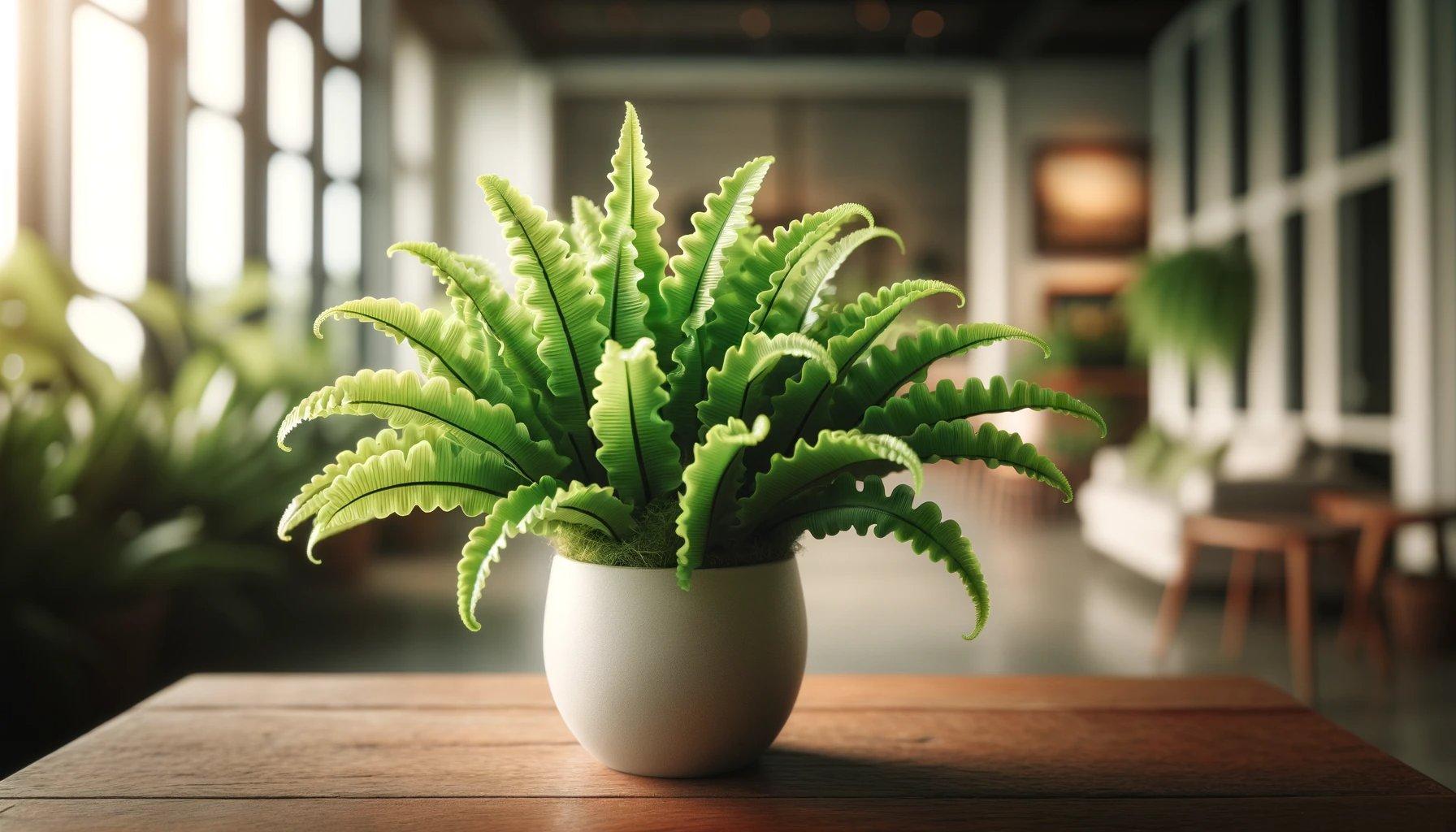Welcome, fellow plant enthusiasts! Today, I’m diving deep into the world of Bird’s Nest Ferns (Asplenium nidus). As a passionate plant parent, I’ve navigated the highs and lows of caring for these stunning green beauties. Whether you’re a seasoned gardener or a curious newbie, this guide is your ticket to nurturing a thriving Bird’s Nest Fern.
Nicknames: Bird’s Nest Fern, Nest Fern, Crow’s Nest Fern

Unraveling the Mystique of Bird’s Nest Ferns
Bird’s Nest Ferns, with their ripple-edged fronds and lush green color, are a dazzling addition to any indoor garden. Originating from the tropical regions, they bring a piece of the rainforest right into your living space. Before we dive into the nitty-gritty of care, let’s understand why these plants are so beloved. For a deep dive into their origin, check out their Wikipedia page.
Light: The Beacon of Growth 🌞
The Perfect Spot
Bird’s Nest Ferns thrive in bright, indirect light. Direct sunlight can scorch their delicate fronds, while too little light may stunt their growth. I’ve found that placing them near an east or north-facing window works wonders. This provides them with the gentle morning light, fostering growth without the harsh afternoon sun.
What to Watch For
Signs of improper lighting are pretty straightforward. If the fronds start to look scorched, it’s getting too much direct sunlight. Conversely, if the plant seems slow to grow or the fronds lose their vibrant green, it’s likely craving more light.
Water: The Essence of Life 💧
The Balancing Act
Bird’s Nest Ferns prefer consistently moist soil but despise waterlogged roots. I stick to a simple rule: water when the top inch of the soil feels dry. This usually translates to watering once a week, but it can vary depending on your home’s humidity and temperature.
Tips for Perfect Watering
- Use room-temperature water to avoid shocking the plant.
- Ensure your pot has drainage holes to prevent root rot.
- Consider misting the fronds occasionally to mimic their natural humid environment.
Environment: Creating a Tropical Haven 🌴
Humidity & Temperature
These ferns adore humidity. If your home is dry, especially in winter, a humidifier or a pebble tray with water can be a game-changer. They’re comfortable in temperatures ranging from 60 to 80°F (15 to 27°C), which luckily aligns with most indoor environments.
A Happy Home
Place your fern in a spot where it won’t be exposed to drafts or sudden temperature changes. This means steering clear of air conditioners and heaters.
Growth: Witnessing the Magic 🌱
Understanding Growth Patterns
Bird’s Nest Ferns grow at a moderate pace, and their fronds can reach impressive lengths in the right conditions. The plant grows outward from a central rosette, giving it a unique, nest-like appearance.
Celebrating New Growth
When new fronds emerge, they are often rolled up and gradually unfurl. It’s a beautiful process to witness, akin to a slow-motion dance of nature.
Repotting: A New Beginning 🪴
Knowing When to Repot
I repot my Bird’s Nest Fern every 2-3 years or when it becomes root-bound. You’ll know it’s time when you see roots growing through the drainage holes or the growth seems to have slowed.
The Repotting Process
- Choose a pot that is only slightly larger than the current one.
- Use a well-draining potting mix, ideally one formulated for ferns.
- Gently transfer the plant, being careful not to disturb its central rosette.
Propagating: Spread the Love 💕
The Challenge of Propagation
Propagating Bird’s Nest Ferns is a bit more challenging than other houseplants. They don’t propagate well from cuttings, but you can divide them during repotting.
Steps to Successful Division
- Gently remove the plant from its pot.
- Identify natural divisions in the root ball.
- Carefully separate these sections, ensuring each has roots attached.
- Pot each division in its own container.
Toxicity to Pets: A Safe Haven 🐾
A Pet-Friendly Choice
One of the great things about Bird’s Nest Ferns is their non-toxicity to pets. If you have curious cats or dogs, you can rest easy knowing that this plant poses no threat to them.
As I bring this guide to a close, remember that plant care is as much about enjoying the journey as it is about achieving the perfect environment. Every Bird’s Nest Fern has its own personality, and part of the fun is learning and adapting as you grow together. Embrace the experience, and watch as your fern flourishes into a stunning centerpiece of your indoor garden. 🌿💚

